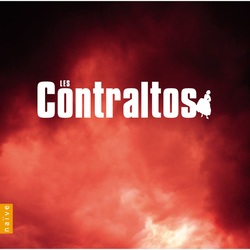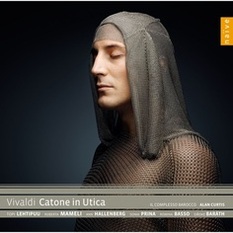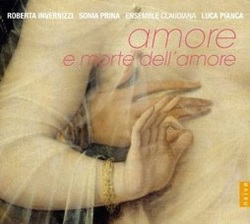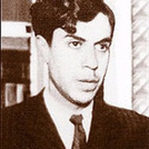|
Les Contraltos is the latest in a series of compilations from Naïve Records, including Les Sopranos and Les Contre-ténors. It is a showcase of the very best of the contralto voice, with five world class contraltos performing a varied repertoire from Vivaldi to Schumann.  With six offerings from the French-Canadian contralto, Les Contraltos is dominated by the theatrical and sensual voice Marie-Nicole Lemieux. A consummate vocal actress, Lemieux is as convincing at portraying the innocence and dreamlike reverie of Thomas’ “Connais Tu Le Pays?” as she is the sultry flirtatiousness of Bizet’s “L'amour Est Un Oiseau Rebelle”. Lemieux’s comprehensive textual understanding of Schumann’s Der Nussbaum and In Der Fremde, coupled with her superlative talent for storytelling, breathe new life into these beautiful Lieder. But it is in the realm of the French Art-Song that Lemieux excels beyond all else. She weaves an enchanting spell through Hahn’s “L'heure Exquise”, while her intimate “À Chloris” is for me the most beautiful piece on the compilation. From the very first phrase of Vivaldi’s “Domine Deus Agnus Dei”, Sara Mingardo’s otherworldly voice captivates and scintillates. Her pure, dark tone adds a melancholic, repentant quality to Vivaldi’s sacred music, yet she is able to lighten her voice with surprising ease in the lively “Quae Moerebat Et Dolebat” from Pergolesi’s Stabat Mater. The Venetian contralto’s most intense performance is of Carissimi’s Cantata “Deh, Memoria, E Che Più Chiedi”, in which she draws every element of drama and passion from the work. The cantata is quite low lying, reaching F3 at points, allowing Mingardo to display her luscious lower register. Nathalie Stutzmann employs a haunting, pure-tone delivery in the “Agnus Dei” from Bach’s Mass in B Minor. Her masterful use of dynamics, and unwavering pitch, bring out the tension in the aria. The phrasing and breath control, combined with her tasteful and understated delivery, make Stutzmann’s “Ave Maria” truly memorable. Mention here must also be made of Aurelie Saraf’s exquisite harp playing. Naïve’s output of operas by Vivaldi are represented here by Delphine Galou and Sonia Prina. “Ti Sento, Sì, Ti Sento” from Teuzzone sees Galou dancing lightly through Vivaldi’s multiple suspensions. There is also a little passage of music in the minor key which comes straight from Cum Dederit. Her “Lo Sembro Appunto Quell’augelletto” from the 1714 version of Orlando is both upbeat and urgent, driving forward with a wonderful foot-tapping beat. The fireworks of the CD are intrusted to the capable hands of Italian contralto Sonia Prina, who coruscates through the coloratura of the low-lying “Come L'onda” from Ottone in Villa with unnerving accuracy and ease. Her da capo ornamentation is fierce and full of bravura, electric and exciting. It is a shame there wasn’t more from Prina on the record. All in all it is a fascinating exploration of the contralto voice, bringing hidden gems to the fore, while showcasing this rare voice type at its best. Les Contraltos should be on the playlist of any contralto enthusiast.
0 Comments
The release of Catone in Utica marks the midway point in Naïve’s 25 year project: the Vivaldi Edition series. Ann Hallenberg, Sonia Prina, and other stars of the Baroque music world have been assembled under the baton of Alan Curtis, accompanied by Il Complesso Barocco.  Catone in Utica Catone in Utica Following on from the successes of La fida ninfa, Bajazet and Adelaide, Vivaldi produced this stunning opera as the finale to his time at the Teatro dell’Accademia Filarmonica. He assembled a diverse cast including a local tenor, Cesare Grandi, as Catone, the soprano castrato Giacomo Zaghini as Cesare, and Anna Girò, one of his most faithful collaborators, as Marzia. The result was a stunning opera of which Prince Charles Albert wrote that “Everything gave undiminished delight.” Only acts two and three ofCatone in Utica survive in the archives of the Biblioteca Nationale in Turin. For this recording, Alan Curtus and Alessandro Ciccolini have painstakingly reconstructed act one. The star of the CD must surely be Swedish mezzo-soprano Ann Hallenberg. Her portrayal of the fiendish role of Emilia is outstanding, both vocally and with respect to characterisation. Hallenberg’s rendition of "O nel sen di qualche stella" is a masterclass in the art of singing. Hallenberg’s rich mezzo blossoms at the top of her range, with never a hint of shrillness, while the low register is full and warm. Listen out for the stunning multiple Bb3’s (Baroque Pitch) in the A section. Her thirst for vengeance in the B section is chilling, and the virtuosity of the extended staccato ornamentation on the word “tiranno” is without parallel. "Come invano il mare irato" sees Hallenberg sail through over two octaves of Vivaldi’s glorious music, from G3 to B5. The unbelievable virtuosity of the endless runs in the da capo, and the magnificent A Capella C6 in the cadenza, are just two of the many highlights of the aria. Hallenberg utterly dominates the music, showing no fear while being totally immersed in the music. It is clear from this recording that she is one of the finest singers on the world stage today. Roberta Mameli’s Cesare is something of a revelation. In “Vaga sei nè sdegni tuoi” Mameli relishes the relentless pace of Vivaldi’s tempestuous aria. Her repeated notes in the da capo are perfectly executed: a truly unbelievable performance. In "Se in campo armato", Cesare throws down the gauntlet to Catone in this coloratura-laden aria. Mameli interpolates some exciting staccato ornamentation in da capo.
Another side of Cesare’s character is seen in "Apri le luci e mira." Mameli’s pure lyric soprano weaves a hunting and hypnotic spell in this devastating expression of Cesare’s love. The B section contains some voluptuous vocal writing by Vivaldi, particularly on the extended phrases on the word “fiamma.” "Se mai senti spirarti sul volto lieve" is a much lighter expression of love, and one which, particularly in the A section, presages Mozart. Mameli’s phrasing in this aria is utterly sublime. The rest of the assembled cast produced some very strong singing. Topi Lehtipuu’s Catone is both energetic and engaging, while Sonia Prina’s Marzia is a delight: full of warmth in the chest register, and desplaying her trademark lightning coloratura in "Se parto, se resto". Romina Basso’s Fulvio was full of fury in "L'ira mia, bella sdegnata", bringing tangible vitriol to the aria, while Emőke Baráth’s Arbace was highly emotional and full of anguish. The accompaniment from Il Complesso Barocco was outstanding, with some surprisingly fierce direction from Alan Curtis.  Amore e Morte dell’Amore Amore e Morte dell’Amore Naïve Records have struck gold with this stunning collection of early music songs. With music from Monteverdi, Handel, Scarlatti and others, this CD has the perfect combination of sublime, tender phrases with fast, exhilarating coloratura. Performing the works are the renowned early music specialists Sonia Prina (contralto) and Roberta Invernizzi (soprano). Both women are known for their intelligent and well researched performances, and for their formidable vocal athleticism. Accompanying them are the Ensemble Claudiana, lead by Luca Pianca, who will be accompanying Sonia Prina at her Wigmore Hall concert on 30th Dec. The CD is dominated by the giant figure of Monteverdi. The opening duet, "Interrotte Speranze" is from the Seventh Book of Madrigals published in 1619. The opening unison phrase by Invernizzi and Prina, is followed by a sinuous, snake-like intertwining of voices, as the soprano and the contralto dance around each other in close harmony. The decision to let Prina’s penultimate “mio” hang in the air, pausing before Invernizzi’s entrance on the final phrase, adds powerfully to the drama of the piece. Another piece from the Seventh Book of Madrigals is “Ohimè, dov’è il mio ben” and “vorrei bacarti”. “Ohimè, dov’è il mio ben” is split into four parts. The end of the first section sees Prina’s contralto scored above Invernizzi’s soprano, adding an interesting texture. In the third section, Invernizzi floats a gorgeous pianissimo Eb5 on the phrase “in me più che’l”, while the final section saw Prina descend to rock solid G3 on the word “morte”. The highlight of the CD is the magnificent “Pur ti Miro”, the closing duet from Monteverdi’s operaL’incoronazione di Poppea. In the A section, Prina and Invernizzi are the epitome of sensual tenderness, their voices dancing playfully and skilfully through Monteverdi’s tender music. Check out the immaculate semitone dissonance on the phrase “più non peno/più non moro”.
"Mentre vaga Angioletta" comes from Monteverdi’s Eighth Book of Madrigals. After an extended solo entrance by Prina, she and Invernizzi alternate between exquisitely precise coloratura, and haunting chromatic lines reminiscent of Purcell. The sublime moment of the piece comes on the phrase “mormorando in basso, e mobil suono” as Prina and Invernizzi sing in close harmony, crossing parts every second note. The execution of the broken coloratura on the phrase “hor la raffrena” is again testament to the skill of the two performers. The other “big gun” on the CD is Handel, represented with two duets. “Tanti strali”, sees Prina exercise her wonderful lower register, with a couple of phrases in the third section lying almost exclusively below the stave. The middle section of the duet is indicative of Handel’s melodic and harmonic genius, with several spine-tingling suspensions, and a novel resolution on the words “arsa e consunta”. The interplay between Prina and Invernizzi is perfectly measured, with Invernizzi producing several beautiful highpianissimi. The CD also features one aria each by Marcello, Lotti, and Durnate, and a sonata by Domenico Scarlatti. Luca Pianca and the Ensemble Claudiana are exemplary throughout the recording. Pianca’s well researched and intuitive direction brings out the best in all the performers, and brings to the fore aspects of the two major composers which would otherwise have been lost. His use of dynamics to emphasise certain words and structural parts of the compositional texture is genius, and works particularly well given the “stripped down” quality of the accompaniment. Amore e morte dell’amore is a "must have" this summer. |
Archives
October 2014
Categories
All
|
MOST VIEWED POSTS
© James Edward Hughes 2013

 RSS Feed
RSS Feed





